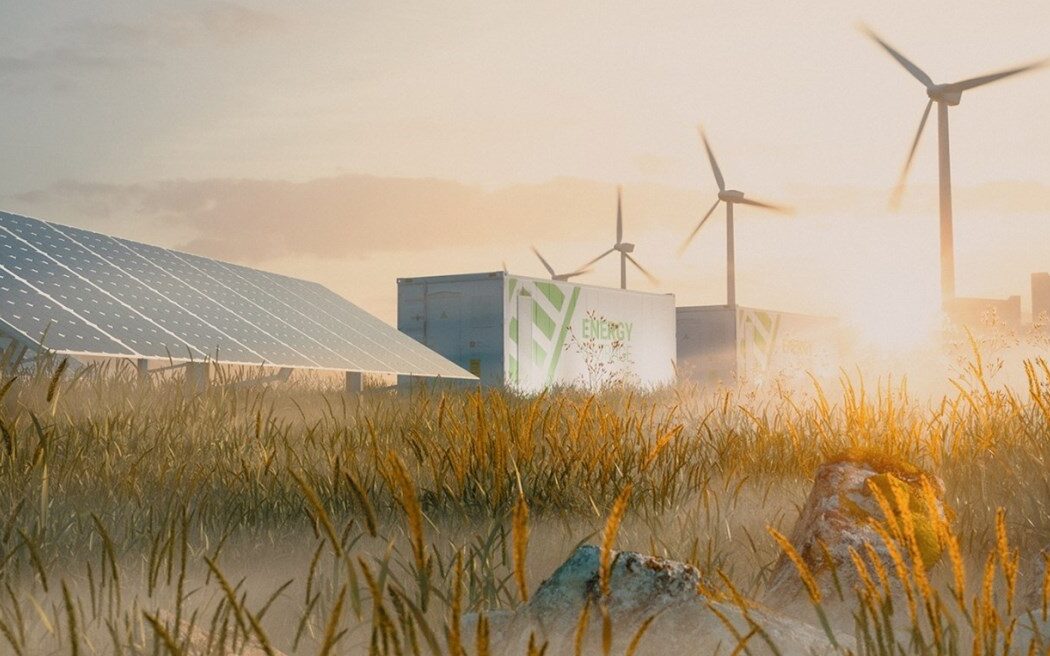On September 25, 2023 in Pueblo, Colorado, local leaders celebrated a $44 million investment from the U.S. Department of Energy (DOE) to support the adaptive reuse of an fossil-fueled power plant into a facility that will advance both clean energy and disaster resilience in the state.
When completed, the antiquated facility will be transformed into a long duration energy storage (LDES) project.
Xcel Energy, in partnership with Form Energy, will receive $35 million to build a new LDES system in Pueblo at the antiquated, retiring Comanche coal-fired power plant.
Variable energy resources are increasingly included as a central component of how grid planners meet customer demand.
But variable energy is exactly that: variable.
For it to produce energy, the wind needs to blow, or the sun needs to shine.
This poses a huge challenge for grid operators that must meet customer demands in real time.
LDES gives electricity a shelf life so grid operators can use it more effectively and for longer terms when taking into consideration changing customer demands, climate, extreme weather events, and seasonal dependencies.
Think of energy storage systems like the battery in your cell phone, which only stays charged for so long despite there being small things that can extend the battery’s life. If your phone is not recharged, it will die. The same is true with long-duration energy storage.
New research on LDES was published published in the Journal of Energy Storage by the Pacific Northwest National Laboratory (PNNL).
“Defining Long Duration Energy Storage” is a report by Senior Energy Analyst Jeremy Twitchell and Waterpower Advisor Kyle DeSomber from PNNL. It explores how the growth of renewable energy generation will require LDES to fill the gap between variable energy generation and customer demands.
The report also describes the barriers in current energy planning and procurement processes that prevent planners from recognizing those needs.
“This isn’t something we are going to be able to flex out of like we have in the past,” said Twitchell.
“Things like energy efficiency, demand response, and overbuilding generation capacity will all be part of the solution. But when you look at the sheer size of these mismatches between when energy is produced in a decarbonized grid and when it is consumed, we simply can’t deploy those things at the required scale,” Twitchell added.
The report looks at how the amount of variable energy—such as wind and solar—available for the grid is changing, outlines new definitions for long-term energy storage, and uses an illustrative example of California’s power needs to demonstrate future shortfalls.
Currently, LDES is loosely defined anywhere between 10 to 100 hours. Twitchell and DeSomber propose that industry adopt two classes of LDES: one class, diurnal, lasts up to 20 hours to reconcile daily cycles of surplus and deficits in generation.
The second class, seasonal, reconciles seasonal periods of surplus power generation with seasonal periods of insufficient generation.
By thinking of long-duration energy in two different ways, utility and grid planners can look at historical load data and better pinpoint the length of “stop gap” energy that will be needed.
“Energy communities like Pueblo have helped power the nation for decades, and supporting them must be central to our transition to a clean energy economy,” said U.S. Senator Michael Bennet.
“This funding from the Bipartisan Infrastructure Law will help Colorado continue to lead in deploying innovative, clean energy solutions while investing in Pueblo’s local economy and workers to help ensure they can thrive into the future,” he added.
Bennet has worked to ensure energy communities are central to Colorado’s clean energy transition.
In 2022, Bennet introduced the National Energy Community Transition Act to support economic development and diversification in former energy communities that face significant declines in tax revenue.
As a member of the Senate Finance Committee, Bennet also helped write and champion the clean energy tax package in the Inflation Reduction Act, which included bonus tax credits for clean energy projects located in energy communities.
In 2021, Bennet introduced the American Energy Worker Opportunity Act to provide resources and training for energy workers as the country transitions to a clean energy economy.
The funding will also advance two related research projects at Colorado’s National Renewable Energy Laboratory (NREL).
In Golden, Colorado, NREL will receive $9 million for two lab research projects to install and test LDES projects.
“Flexible energy storage is a new, innovative system that’s less expensive, more durable, and requires fewer critical minerals, ensuring we have a reliable grid system even when the sun isn’t shining or the wind isn’t blowing,” said U.S. Senator John Hickenlooper.
“These investments from our Bipartisan Infrastructure Law are a big deal and the City of Pueblo and NREL are leading the way!” he concluded.
This funding was made available through the Bipartisan Infrastructure Law, and is part of a $325 investment from DOE to support LDES projects in 15 states.
Image of LDES system courtesy of Pacific Northwest National Laboratory (PNNL).

